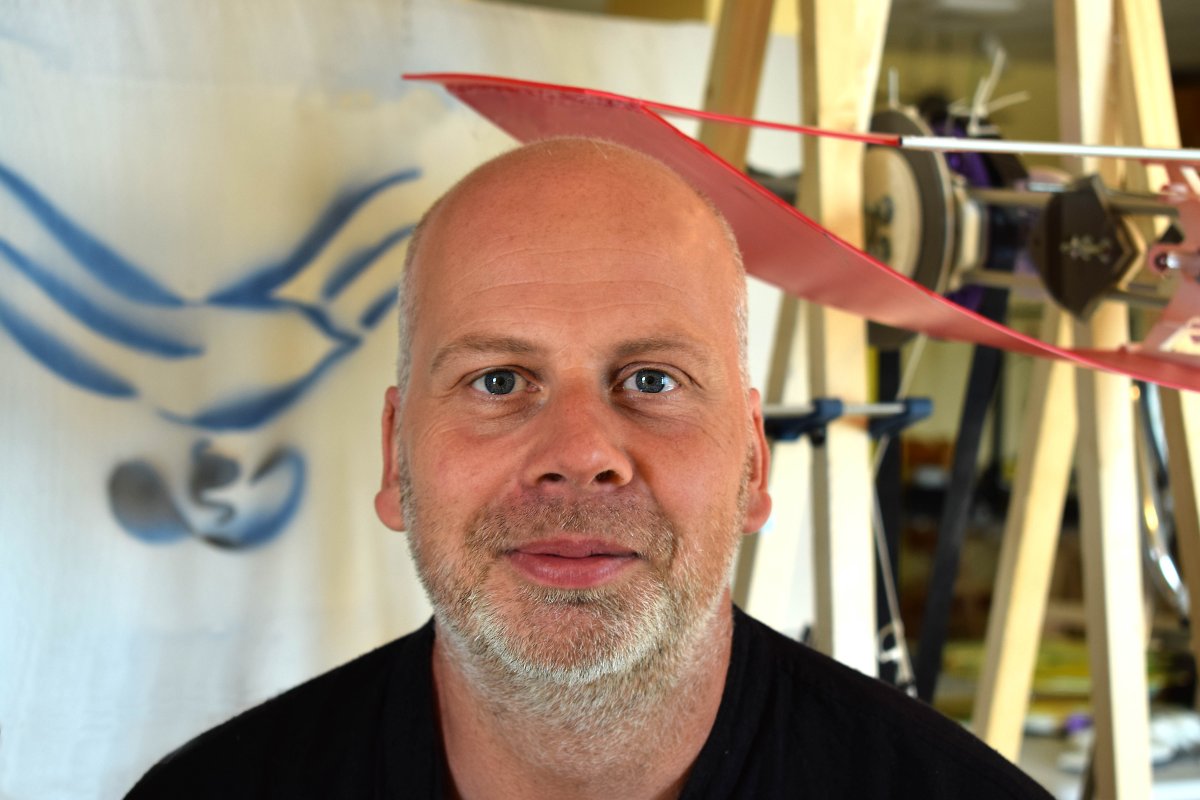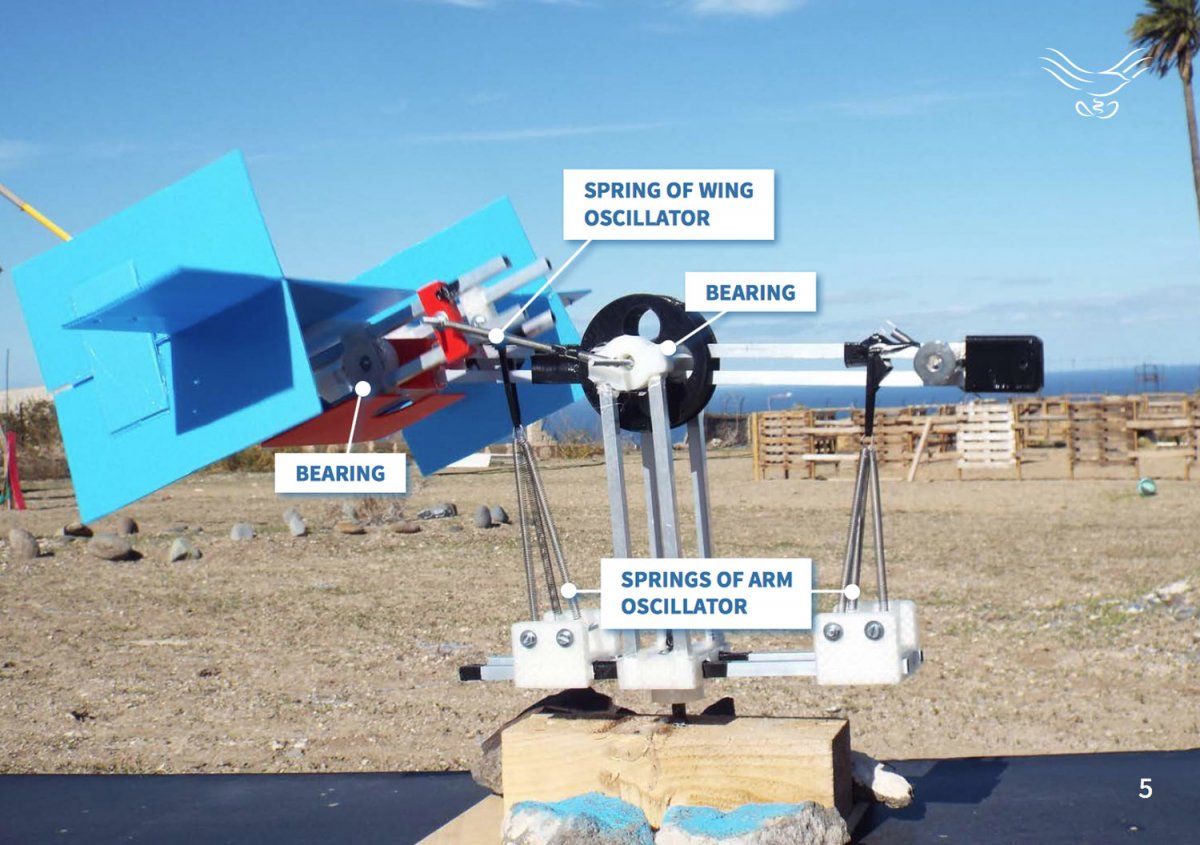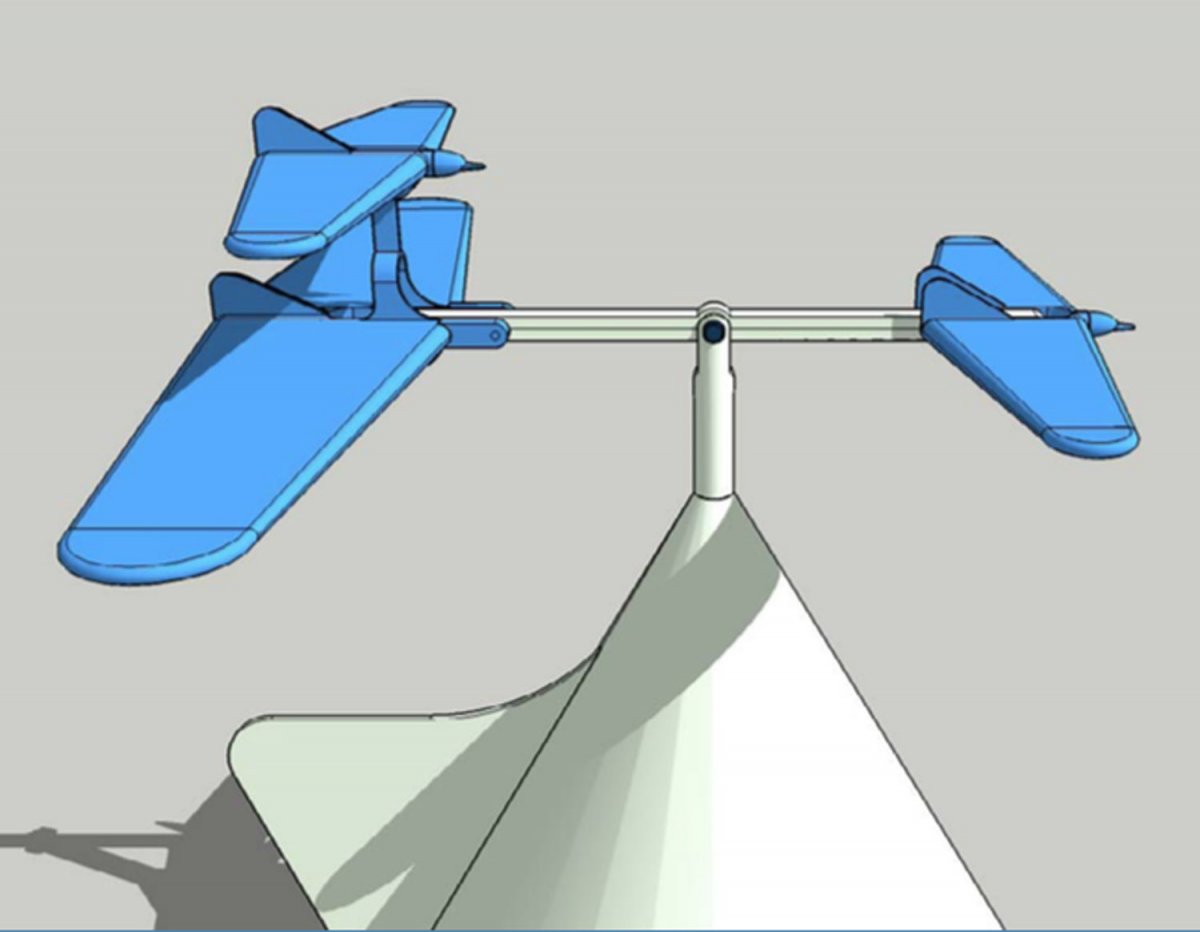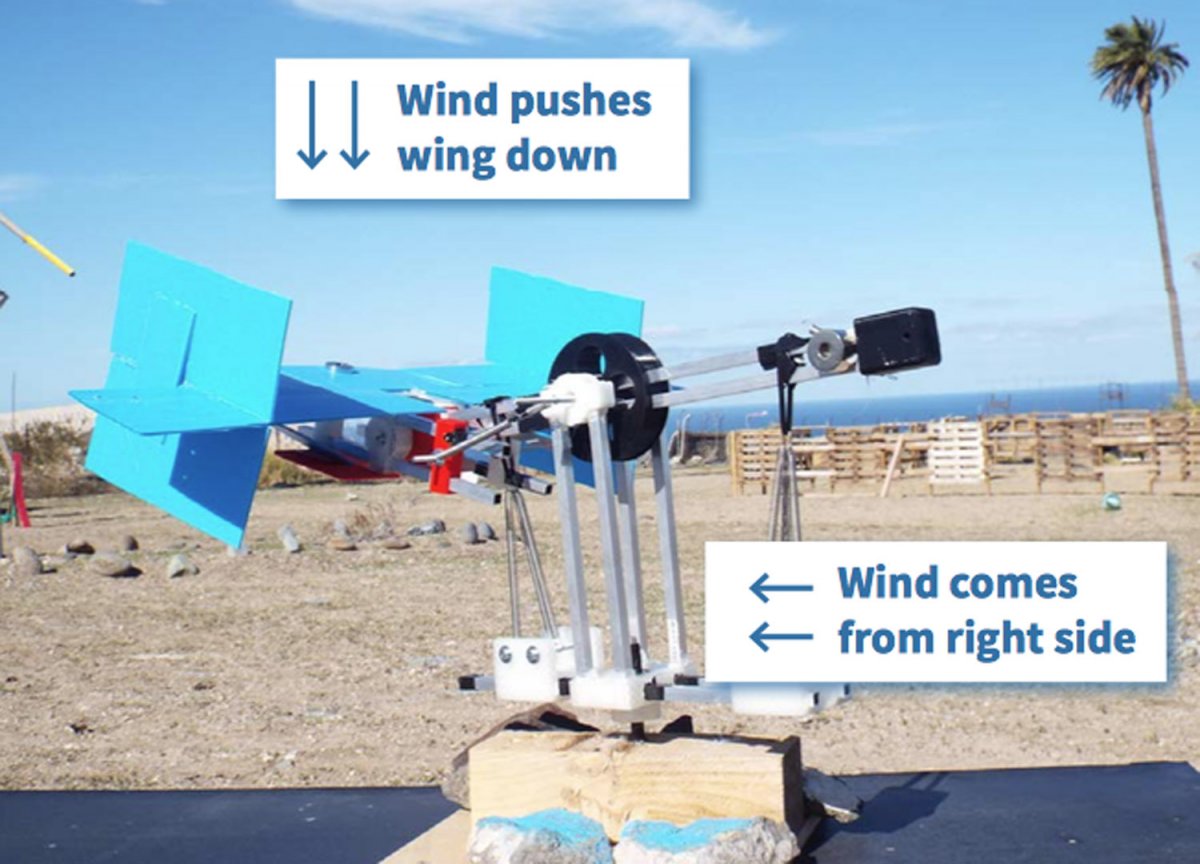I’m the inventor of the EneBird technology and CEO of EneBird Inc.
In this document, I will explain to you how our patented technology works. It is a wind-energy harvester without a rotor.
We claim that wind-energy- harvesting by wings is much more e ective than traditional windmills, especially with low wind speeds. Our invention uses synchronized mass- spring oscillators to achieve its goal. This makes our invention cheaper to build, more easily sizeable and extremely e ective when multiple wind-energy-harvesters are grouped together closely.





